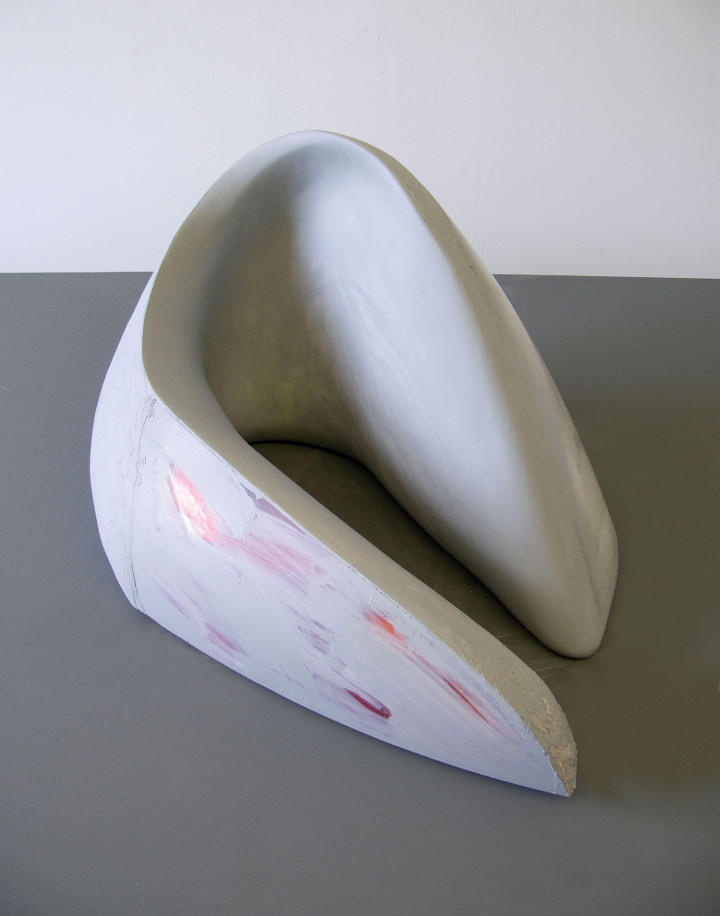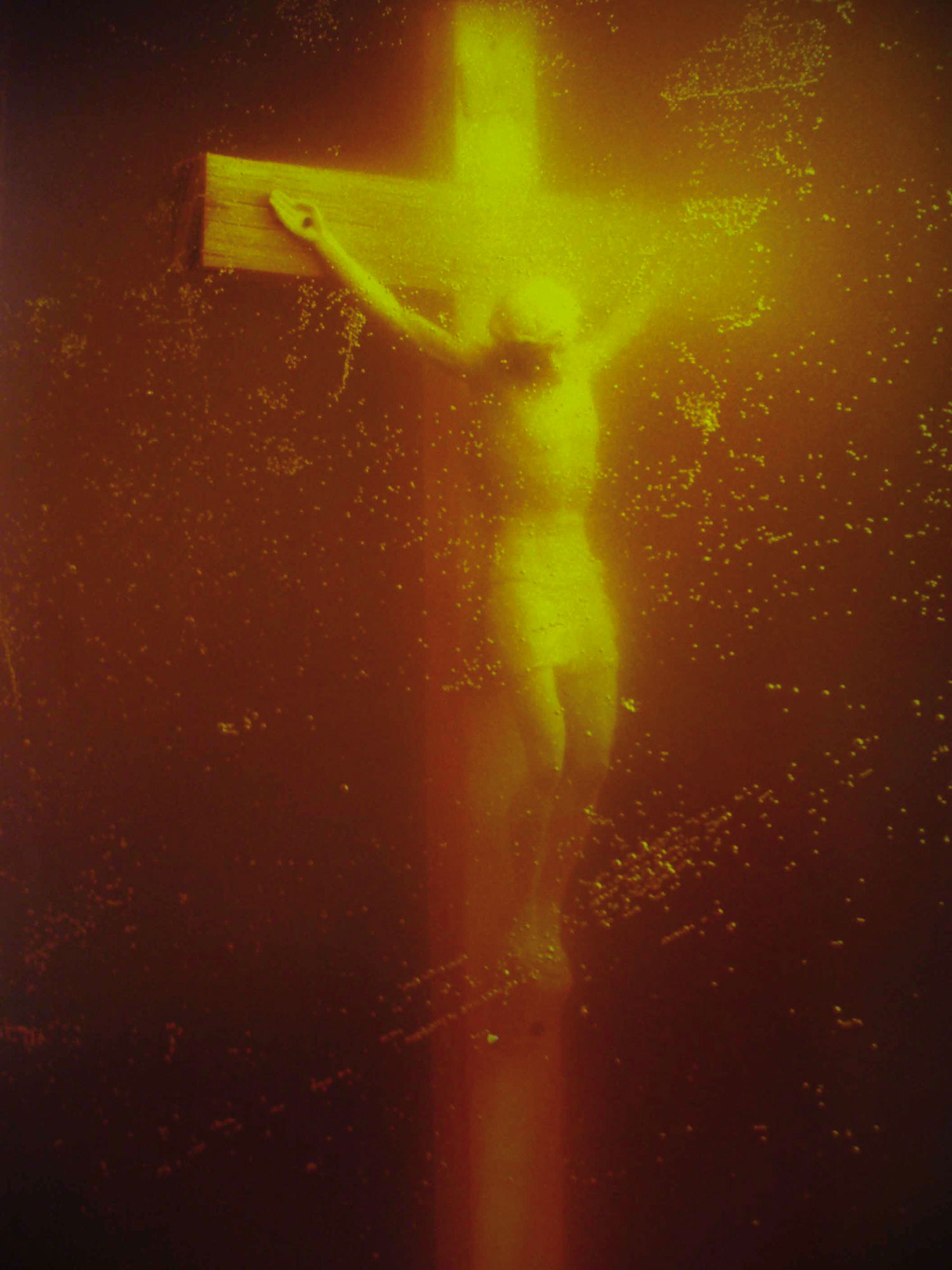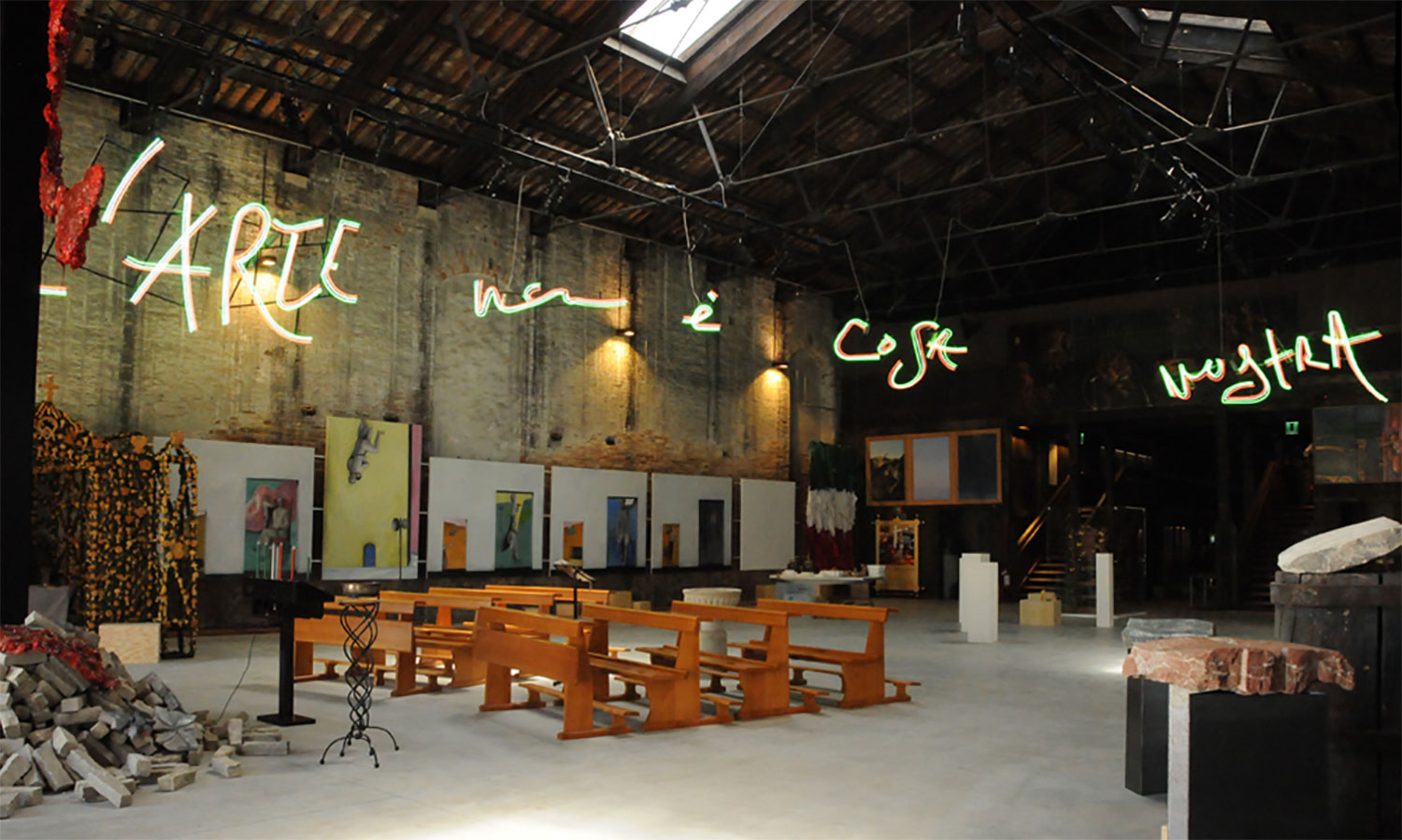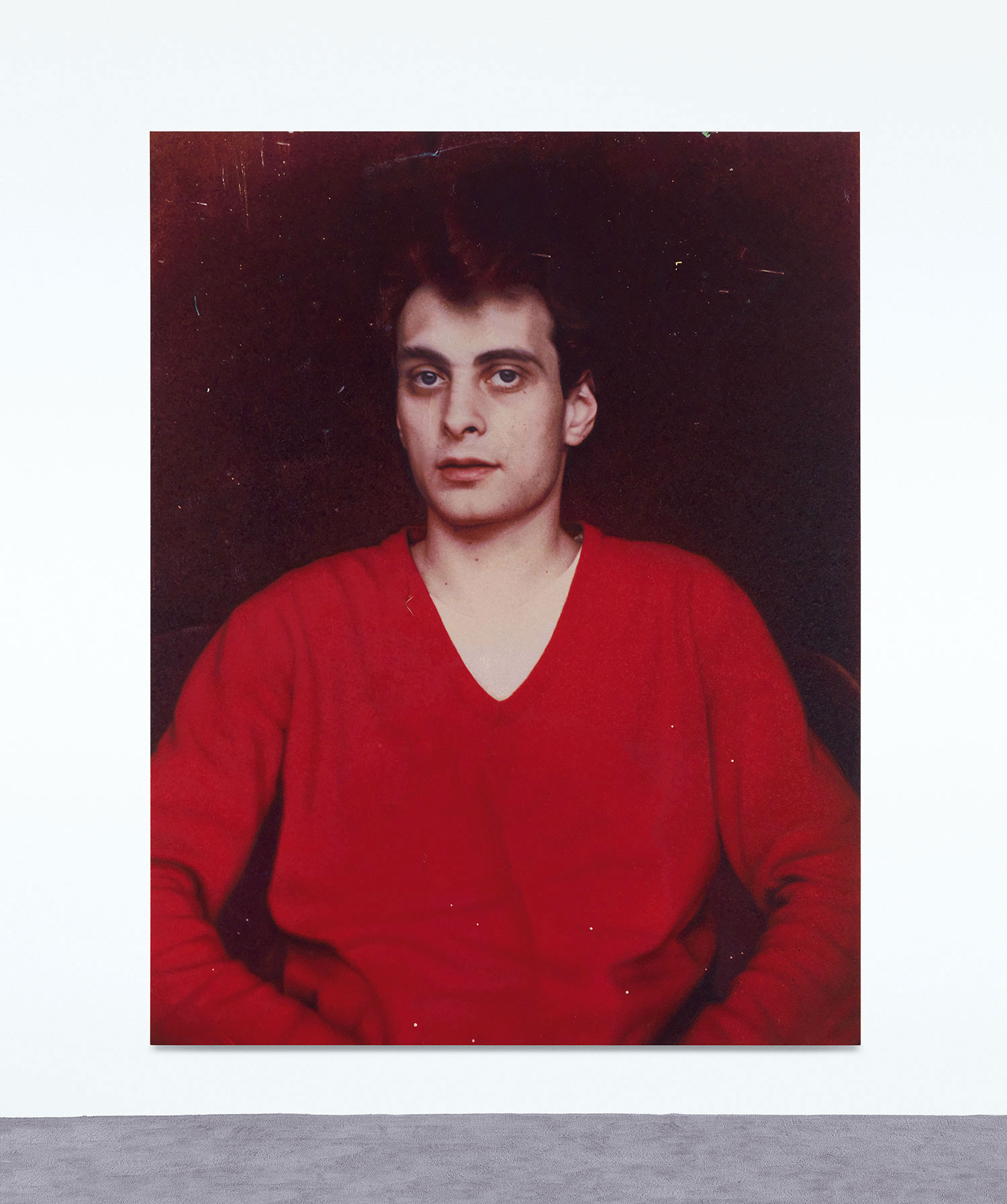
The Great Plastic Vortex (2011), a work Alexander Heim presented at Art Basel’s “Art Statements” last June, refers to a phenomenon known as Pacific Ocean Garbage Patch: An area in the center of the North Pacific Gyre, where allegedly vast amounts of plastic debris are amassing in a circular current. There were even some speculations, whether the debris had formed a floating island of rubbish in the middle of the gyre.
In line with Heim’s predilection for working in different formats, the idea of the vortex has been recreated through a combination of media including a video projection of garbage floating in the Thames, the sound of a car stereo at full power rotating around the space. At the centre of the installation stands a series of sculptures of modified car parts to which Heim has added a kind of cocoon of clay. Camouflaged by their newly acquired vests, and animated by the vibration produced by the music, the mechanical components resemble a previously unseen specimen of ocean creatures, hinting not too subtly at the possible side effects that the continuous disposal of unwanted objects will eventually have on the maritime fauna.
The concept of an indoor installation engaged in a dialectical relationship with a human-generated alteration of the landscape poses interesting analogies with Robert Smithson. Whereas in Smithson’s case it was essentially a spatial and geological issue, Heim’s art is more oriented towards the exploration and at times the obfuscation of the line separating the artificial and natural. The constant deployment of ready-made techniques, both in terms of subjects and materials, further strengthens this notion, suggesting a tantalizing parallel between the acceptance of existing objects in art and the integration of manufactured elements in nature. Waste and pollution, possibly the two most problematic aspects of mankind’s impact on the planet, are here assimilated and reintroduced through a formula that emphasizes the actual link between their perpetrators and the environment they inhabit, as well as their morphing shape.

In such a context, it is perhaps unsurprising that Heim decided to pinpoint car culture as the ultimate poster image for this complex association: Les Chevaux Vapeur (2010) is a short film depicting the Welsh shoreline in which the sound of waves has been replaced by the rhythmically similar and amazingly apt noise of a roaring engine. Another installation by Heim entitled The Rotherhithe Tunnel (2006) is a one-year project he started in London by collecting severed rearview mirrors in a narrow S-shaped bend of the Rotherhithe Tunnel, a site infamous for this kind of accident.
Heim’s ecological message is not entirely critical. His sense of humor, coupled with a genuine fascination with biological mutation, reveals a rather philosophical attitude, implying that the changes we are witnessing in our ecosystem are part of a bigger picture where transformation plays a primary role.





